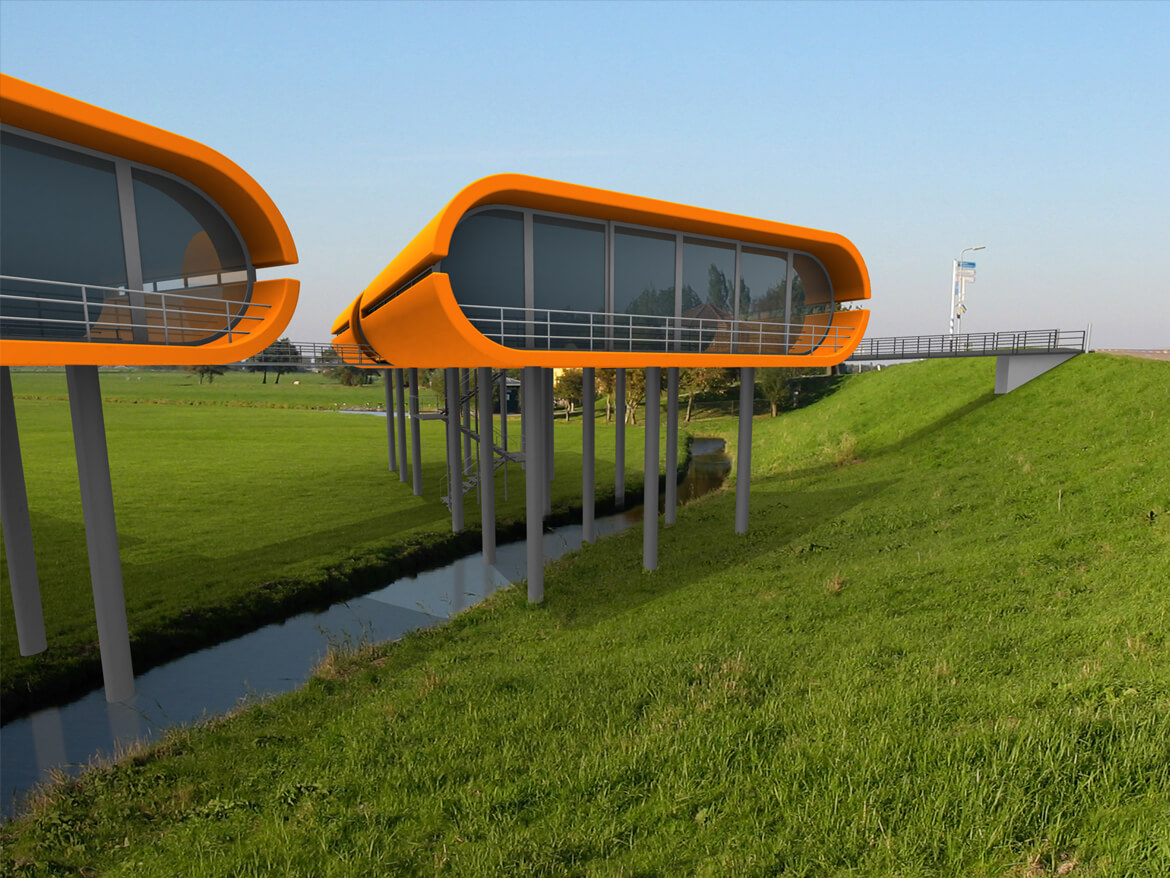Floating future
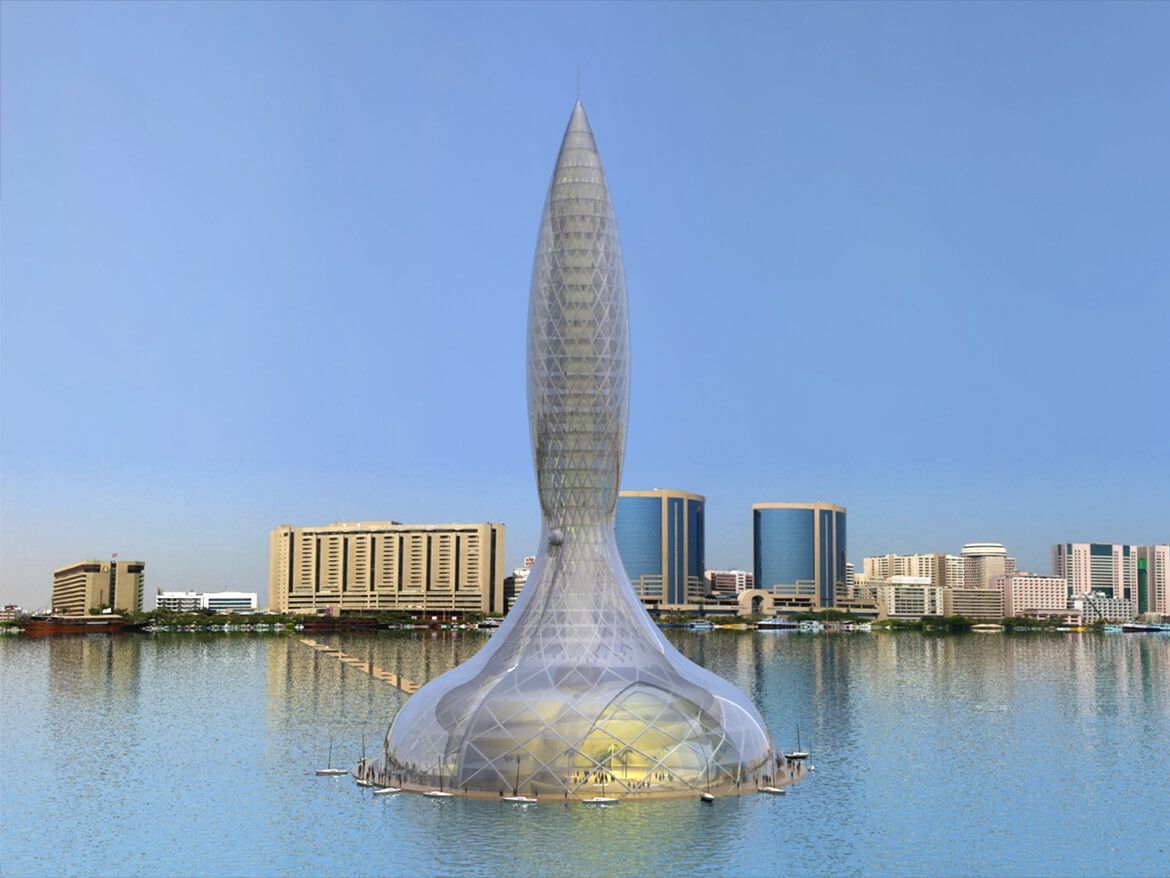
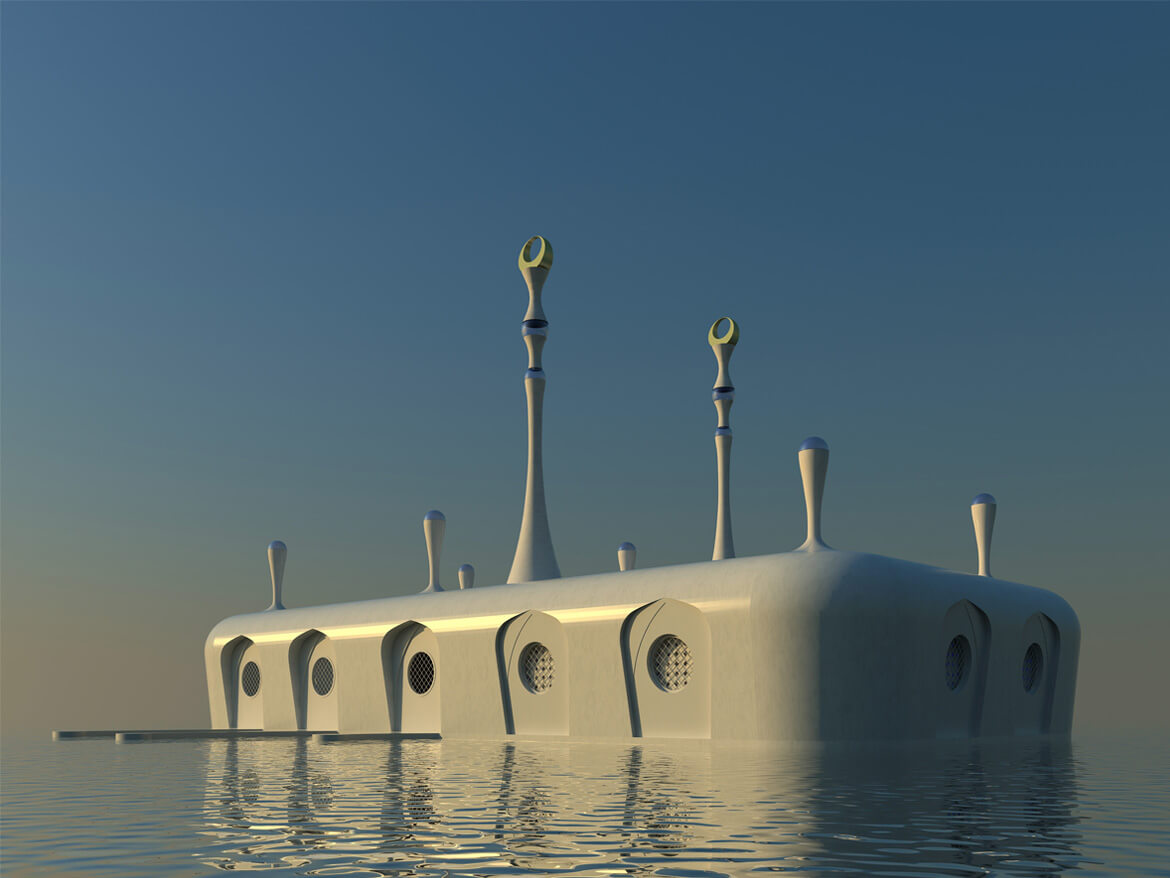
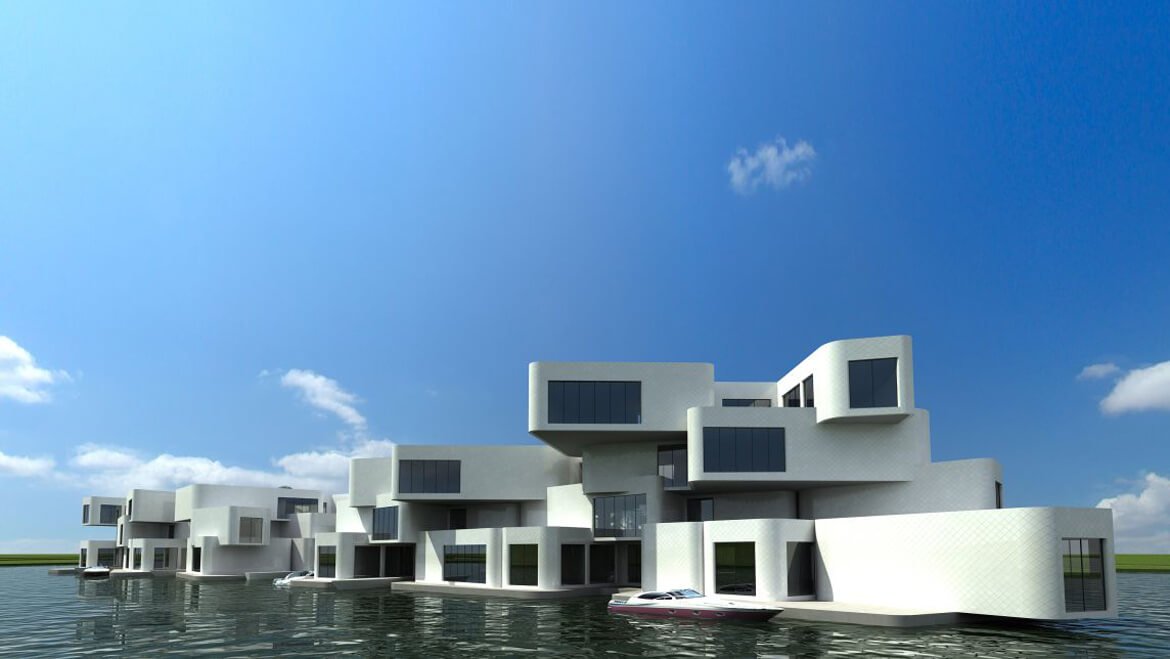
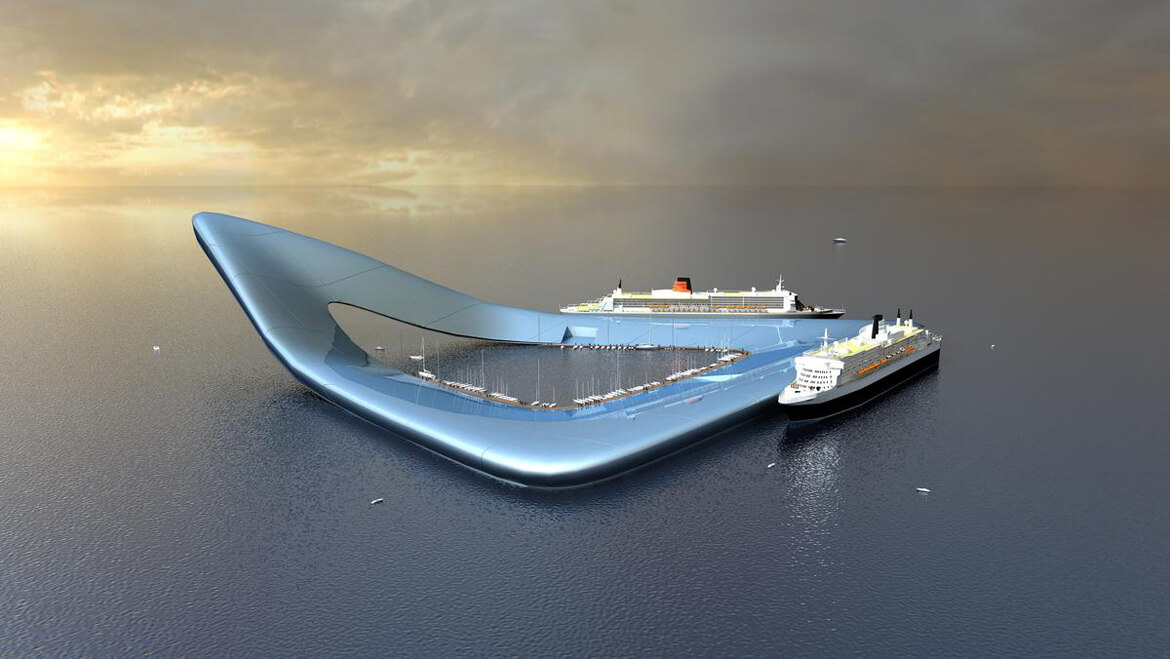
TOPOS, Koen Olthuis
Given the ongoing trend of urbanisation and the unpredictable effects of climate change, architects and urban planners need to rethink the way they deal with water in the built environment’, says Koen Olthuis of Waterstudio.NL, an architectural firm based in Rijswijk, the Netherlands, that has taken up the challenge of developing solutions to the problems posed by urbanization and climate change. Waterstudio.NL thinks that large scale floating urbanism will provide a sustainable strategy that is able to deal flexibly with changing demands while being able to adapt to water level fluctuations. Between now and the future they envision four steps towards utilising the full potential of floating developments. Leading Waterstudio.NL is Koen Olthuis, who studied Architecture and Industrial design at the Delft University of Technology. In 2007, he was chosen as nr. 122 on the Time Magazine list of most influential people in the world. His vision is to change cities worldwide by using water as building ground.
The current generation of architects belongs to the ‘climate change generation’. It is up to young architects to think of solutions to the consequences of climate change in our urban environment and think about the cities of tomorrow. For the first time in history, more people worldwide are now living in urban areas than in the country. Migration to the city continues unabated. Prognoses are that by 2050 70% of the world’s population will live in urbanized areas. Given the fact that about 90% of the world’s largest cities are situated at the waterfront, we are forced to rethink the way we live with water in the built environment. Given the unpredictability of future developments we need to come up with flexible strategies – planning for change. Since infrastructural efficiency puts a limit on simple expansion, we need to find density within existing metropoles: this new density can be found by making use of the existing water in the urban landscape. Where urban planners run into problems by the limits of space and the rise of sea levels, the freedom of floating developments on water only takes off! Water is the next big thing. In our scenario for the future, we’ve distinguished four steps towards floating urbanism. The stepping stone for these developments is to close the gap between land and water houses, by making water houses equivalent to traditional houses on land, in all relevant aspects such as comfort, quality and price. 2010-2020: Trading Places Economic pressure and ground prices in city centres often demand that old functions are demolished. The coming 10 years the first step in water-based development is to relocate functions, which claim a large amount of space in economically valuable areas while generating low revenues, from the centre to the waterfront. This provides space for more economically feasible developments in expensive high-density areas while regenerating often dilapidated waterfronts. We call this ‘trading places’. 2020 – Future: expanding urban fabric A next step would be to expand the urban fabric beyond the waterfront: building normal urban configurations on water locations, with normal densities and all the usual typologies. Water-based neighbourhoods that look and feel just like traditional land-based areas, but only happen to have a floating foundation that allows them to cope with water fluctuations. Logical places to start expanding the urban fabric beyond the waterfront are the old harbours, where a lot of space can be found close to the centre and where square meter prices are lower than in the centre.
2040 – Future: dynamic cities The following step would be that buildings in the course of time could be relocated according to changing conditions. Cities will be made up of dynamic constellations, in which functions can be moved during their lifetime, responding to both social needs as well as economical considerations. By uncoupling the permanent connection between building and location, the building becomes a commodity – a product that can be used during its lifetime by different owners at different locations. This reduces the double costs of demolition and rebuilding, resulting in both economic as well as resource savings on an unprecedented scale. 2100 : Consumer urbanism In the long term, changes in urban conditions and demands happen not only within cities, but also on a global scale between different cities. Some metropoles may expand quicker than others, while their functional makeup may change. The identity of major cities, their character, resides in the centre that is least affected by growth and shrinkage. The suburbs represent more temporary functional additions that help the town as a whole to function. These suburbs are interchangeable between cities. Floating city parts allow a site to be used for different purposes in the course of time, by relocating functions without leaving a trace – the temporary use of space leaves no permanent damage to the location, making it a sustainable strategy. Floating city parts allow the emergence of what we call consumer urbanism: the scarless relocation of city parts to another city, able to respond to changing requirements in a global market for urban components. It is neither technology nor money that keeps floating developments from being realized yet on a large scale, but the lack of a change in perceptions. Climate effects, together with the pressure on space through urbanisation, will push our design targets beyond the waterfront. By introducing new innovative concepts and visions we can achieve sustainable architectural, urban, social and environmental results while dealing with water management problems at the same time. A sustainable future lies beyond the waterfront! It is up to the climate change generation now


